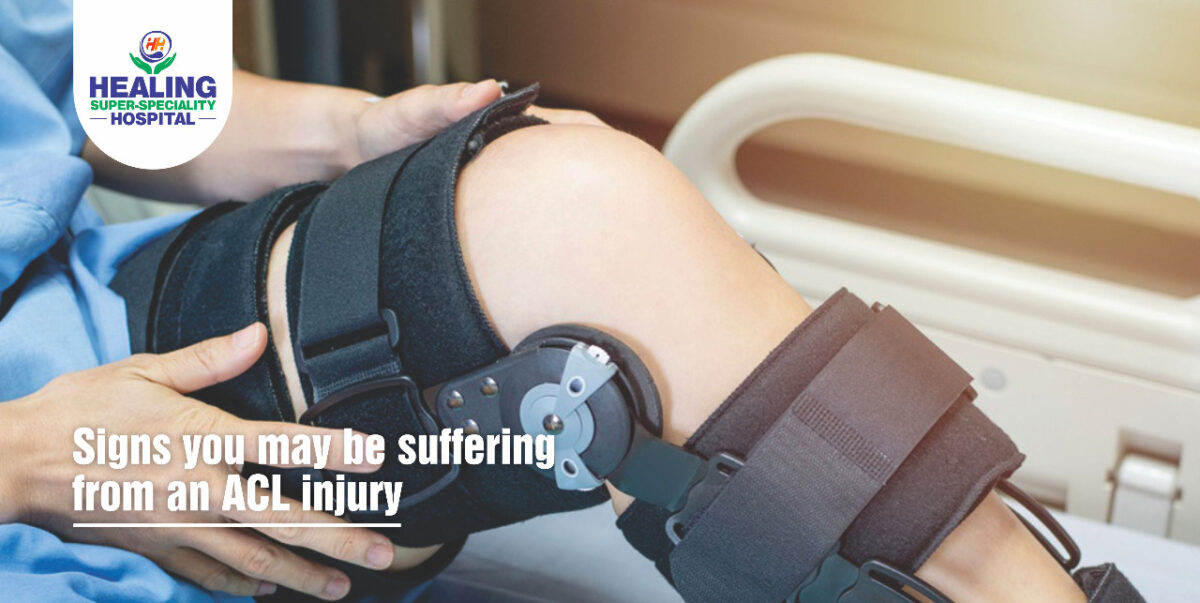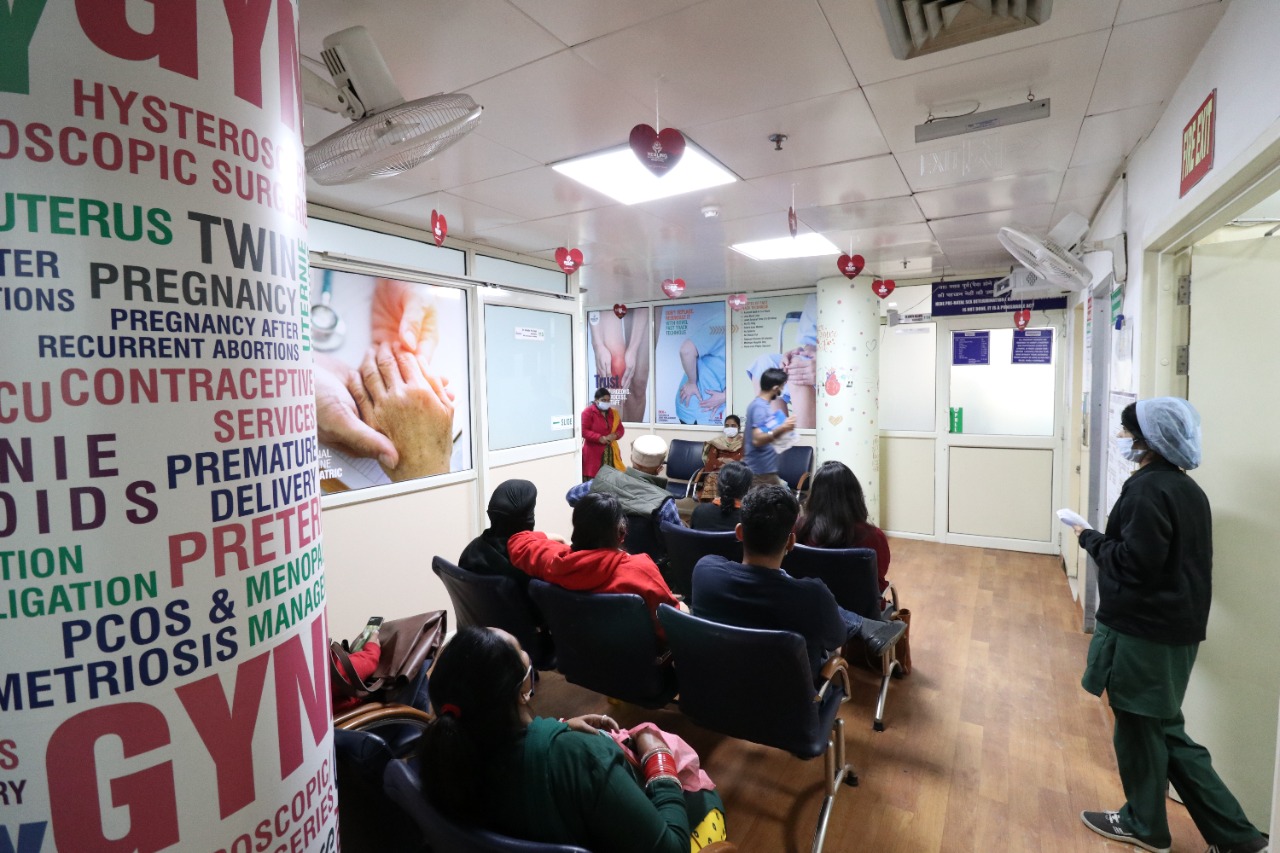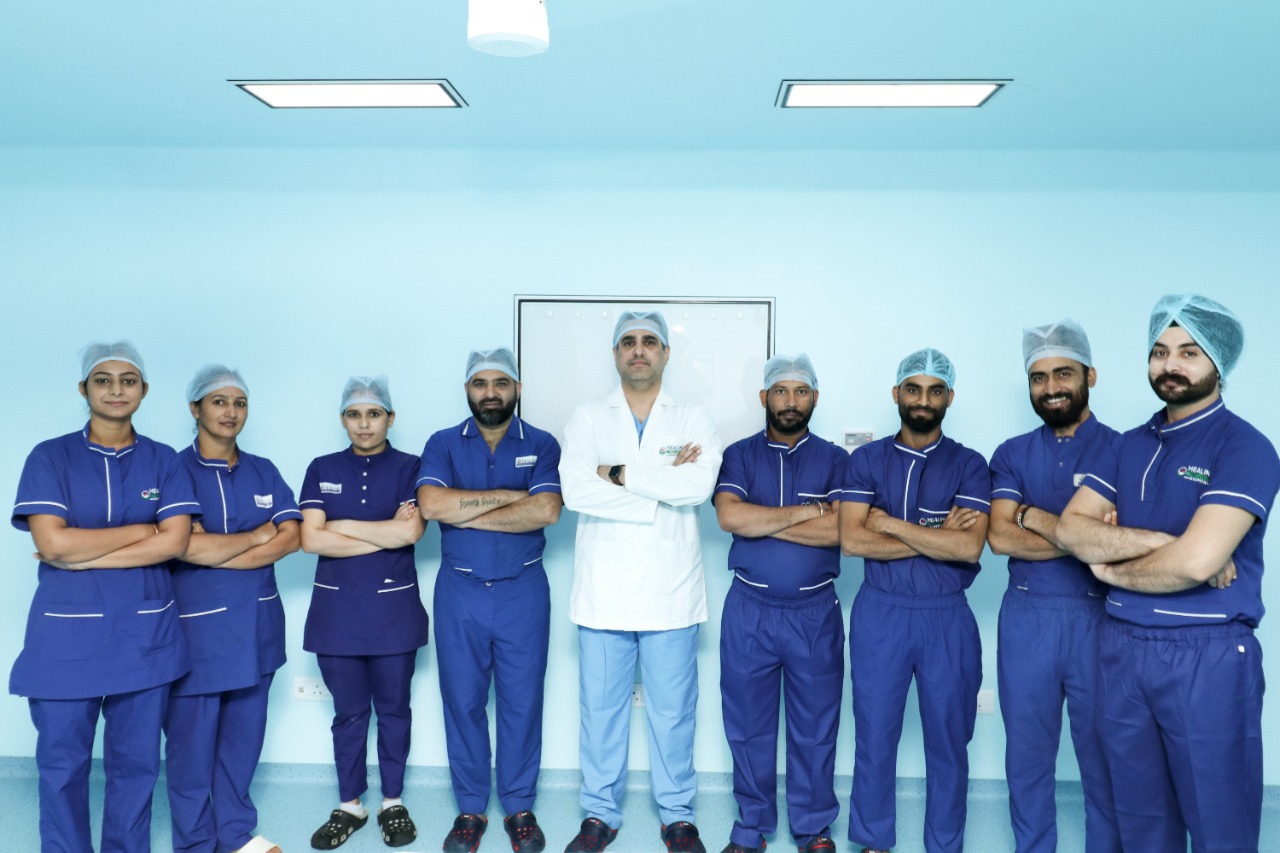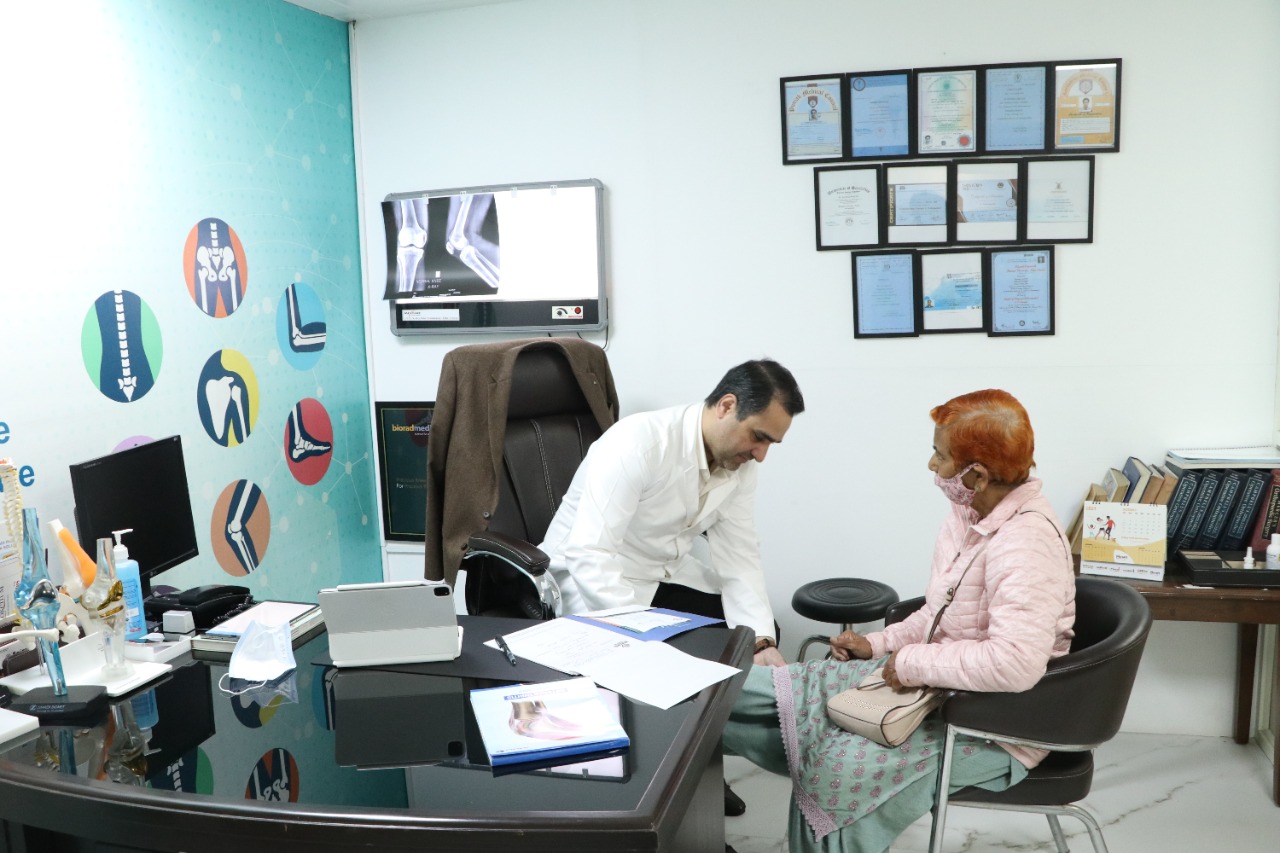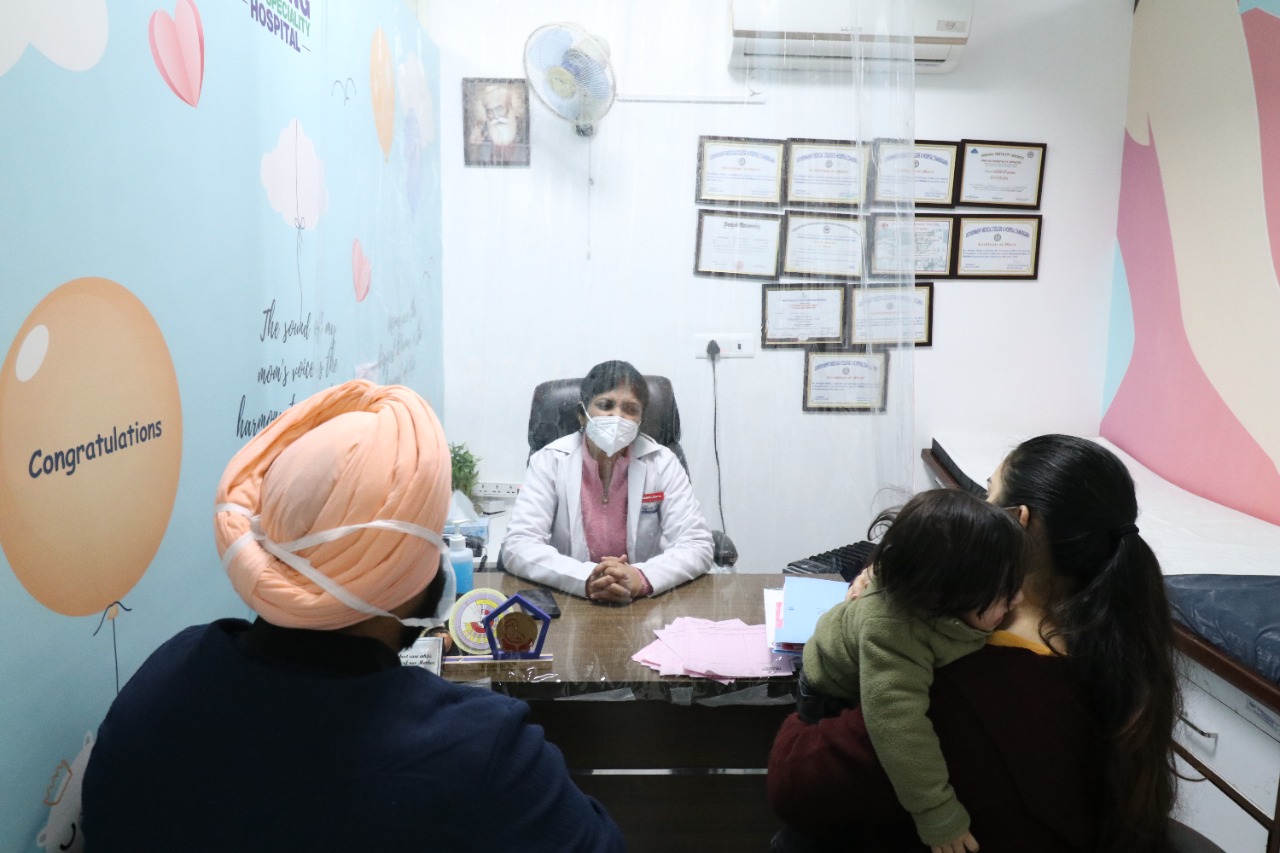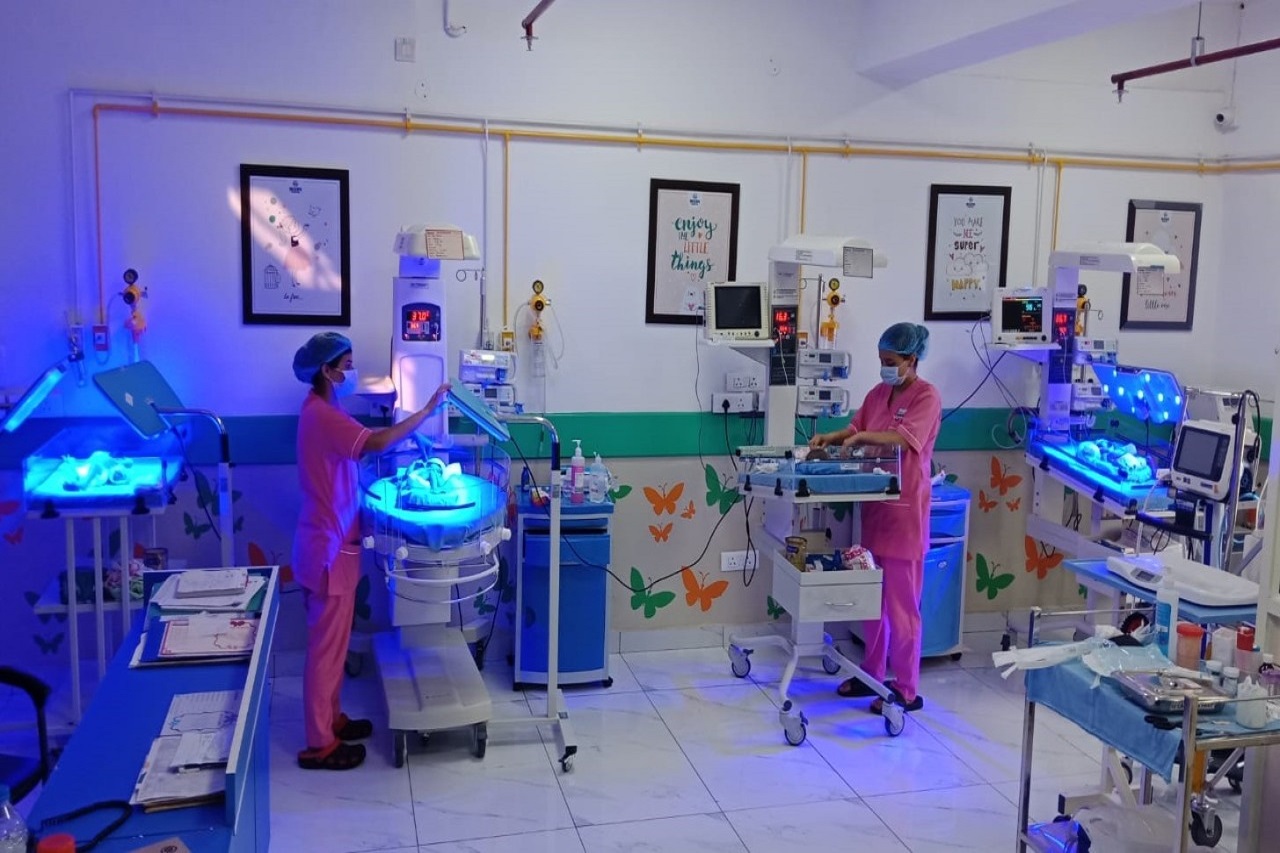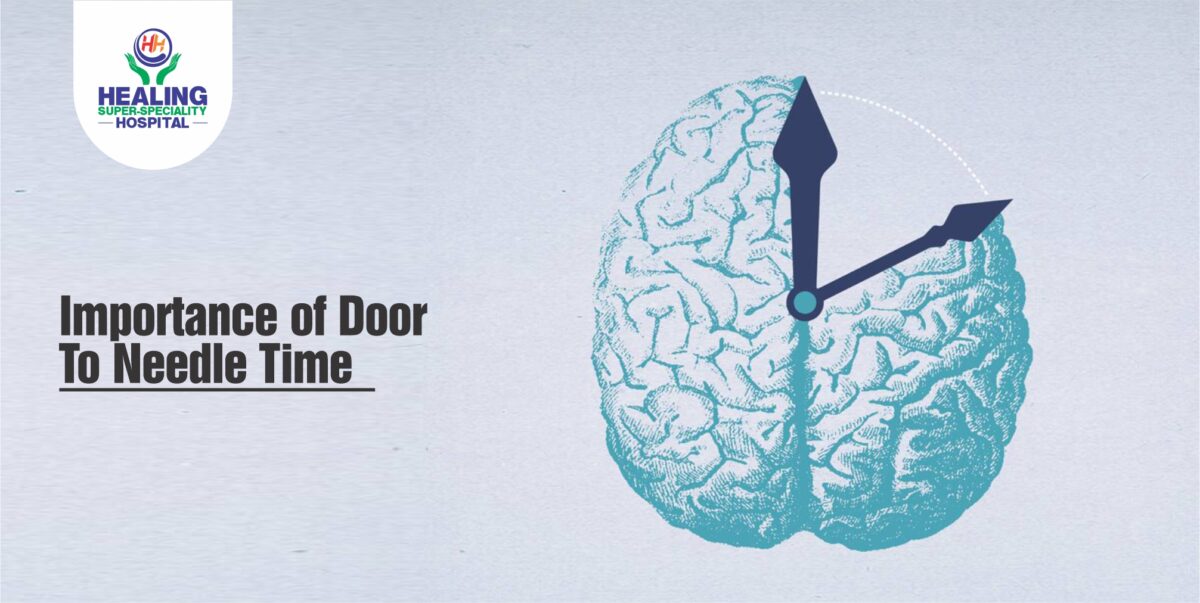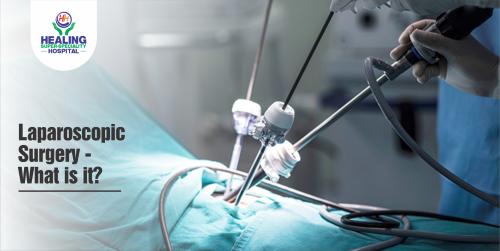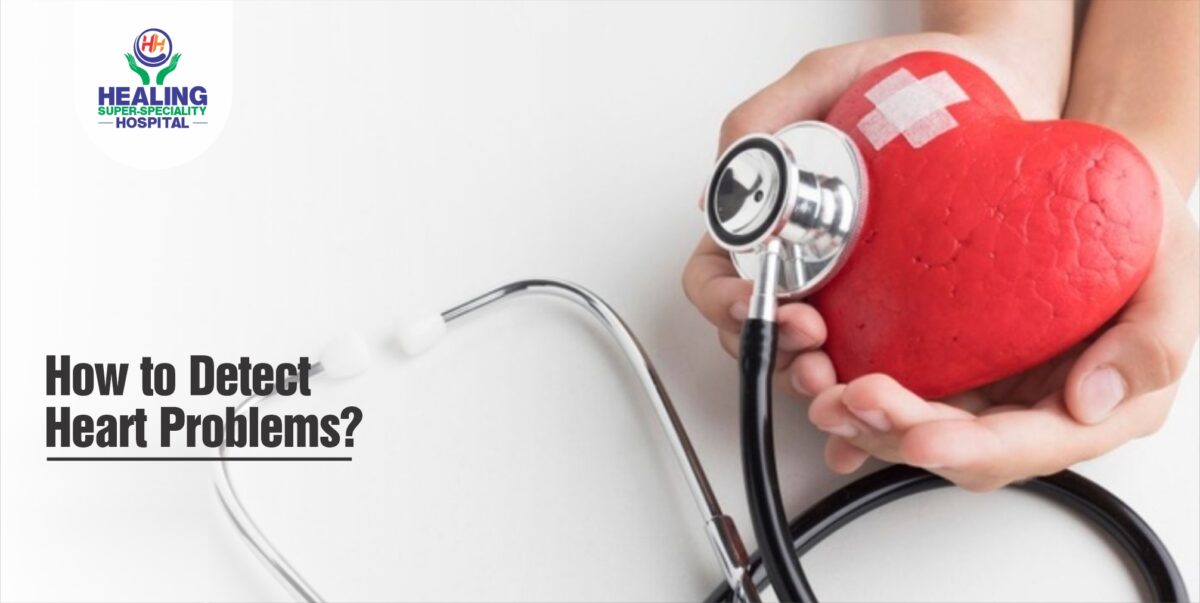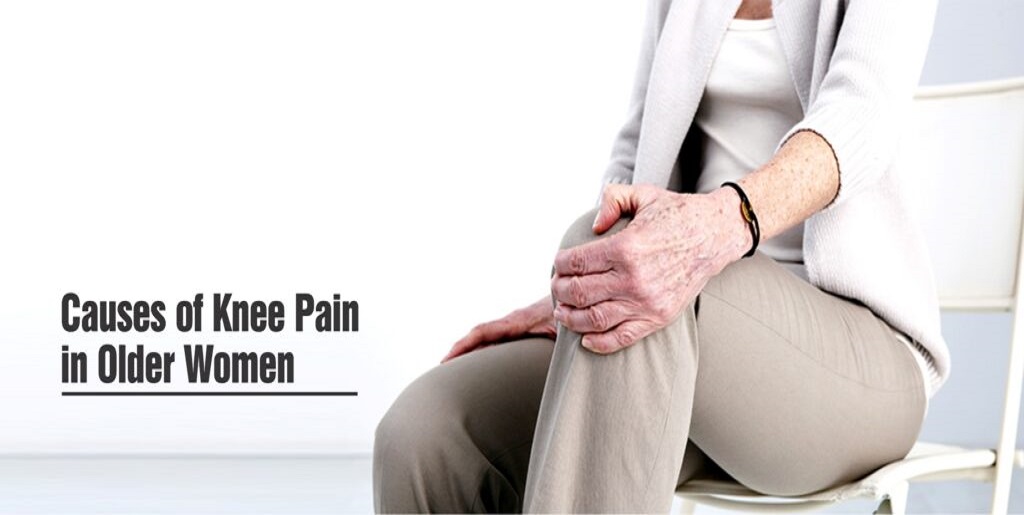If you are a professional athlete or love playing sports for recreation, an ACL injury is likely to be one of your main concerns. A tear or sprain of the Anterior Cruciate Ligament (ACL) is known as an ACL injury. ACL injuries are very common in sports like football, basketball, skiing, etc., which involve abrupt stops, jumping, landing and sudden change in direction.
The Anterior Cruciate Ligament is located in the middle of the knee. This is one of the four major ligaments that connect the femur to the tibia. Essentially, the ACL holds the knee in place with the aid of the MCL, LCL, and PCL.
Following are some of the signs for an ACL injury:

- Hearing a loud pop: When an ACL is torn, most people experience a popping sensation in the knee. This “pop” sound can sometimes be so loud that even the bystanders can hear it.

- Knee pain and swelling: Even if you don’t hear the pop, an abrupt change in the joint is normally felt, which can lead to swelling and pain. Swelling of the knee joint occurs in almost all ACL tear cases. This swelling is normally very extreme and happens within minutes of the injury.
In addition to the swelling, it also causes pain, which varies depending on the extent of associated damage in and around the knee joint. Bruising can also appear all over the knee.
- Knee instability: The ACL is essential for knee joint stability, therefore, an ACL tear can lead to knee instability. Pivoting movements, which are standard in many sports, normally result in the instability of the knee. Due to ACL tear, instability can happen even with basic movements such as walking, etc.
- Loss of range of motion: Motion loss, especially loss of full knee extension, is the most common complication after an ACL tear. Abnormal joint movements and variations in the normal knee movement arise from the failure to completely extend the knee.
- A feeling of warmness: If you feel a warm sensation around the knees, it usually indicates inflammation or bleeding within the knee joint. In addition to this, your knee may also feel warm due to an infection. In the case of an infection, the body sends infection-fighting blood cells to the region, hence making it warm.
- Inability to bear the weight of the body: The discomfort and swelling resulting from Grade II or III injuries can make it difficult for the patient to stand or walk without assistance.
- Numbness: Numbness is a condition that causes tingling and lack of sensation in the knee joint. This numbness and tingling can often also spread down or up the leg. Swelling and inflammation caused by an ACL injury may result in knee numbness.
- Abnormal physical exam: Relevant tests can be used by your doctors to evaluate the ligaments in your knee. The Lachman test, pivot shift manoeuvre, and drawer test are the most widely used methods to assess the existence of an ACL tear.
- Unusual imaging: On your visit to the best orthopaedic doctor in Chandigarh, your doctor would use X-rays or MRI tests to check for any potential fractures, as well as to check for ligament or cartilage damage.
A physical examination and medical history can often easily diagnose an ACL tear, just as well as an MRI. An MRI is particularly useful for detecting associated injuries like meniscus tears and cartilage damage.
When should you see a doctor?
Since it is difficult to identify what any signs can lead to, it’s important to see a doctor if you have any of the above or the following symptoms:
- Knee swelling or discomfort that lasts longer than 48 hours
- The knee seems deformed or irregular
- Difficulty in standing or walking
- Difficulty in holding weight on the affected leg.
When it comes to a knee injury, getting the right diagnosis and care is crucial for complete treatment and recovery. Therefore, you should go for only the best. Book an appointment with the best orthopaedic doctor in Chandigarh here: https://healinghospital.co.in/orthopedic/




